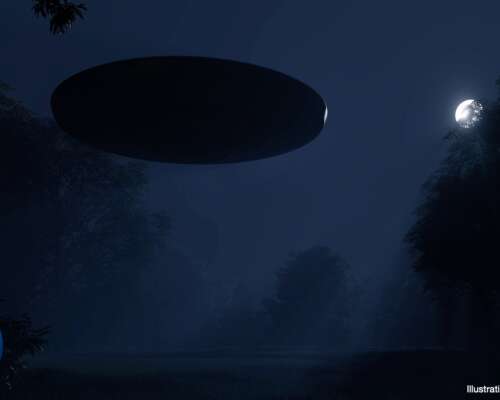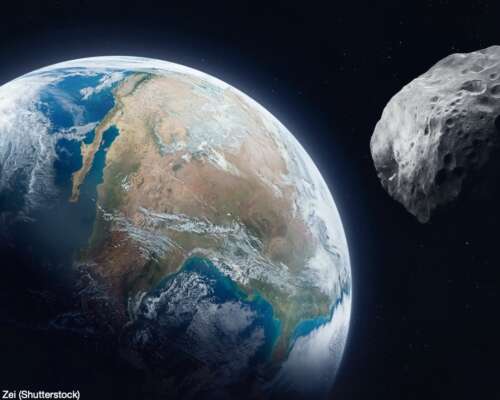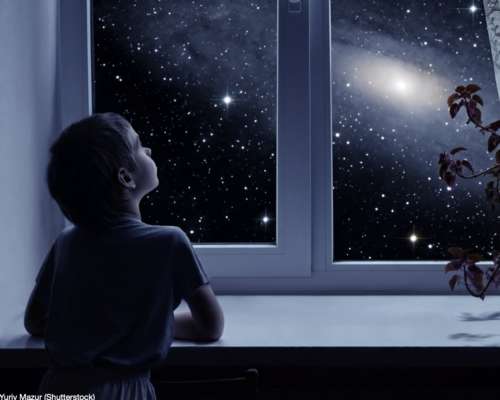This is something of a “fun” topic for me. In some sense, it reminds me of when I was a small child wandering through the woods where I lived. I always felt safe among the stoical sentinels; the towering oaks, the fragrant hemlocks, the colorful sugar maples and the white birches. These trees were home to many arboreal tenants, such as chattering red and gray squirrels, chipmunks and raptors including merlins, hawks and owls. There were ancient and therefore somewhat indistinct trails for me to follow which were nevertheless as prominent to me as Broadway in midtown Manhattan is to a commuter. But I always wondered what I might be missing–what might lie unseen until after the sun sets? A world of strange denizens hiding under a rock or rotted log? Or, maybe there was another reality hidden alongside the first, entered through a door that I might be able to bid appear if I knew just what to say. Perhaps this curiosityis what beckons people to explore caves? They want to see where a cave leads and what they might discover enroute? Or it explains why astronauts dream of going to Mars?
I wanted to write something on a topic that became increasingly complex for an old man to ponder, so I had to break it down into smaller components. I want to begin by discussing a theme or concept known as “doors” or more properly, portals that lead to another reality or world. Those who are familiar with Lewis Carroll’s Alice’s Adventures in Wonderland and Alice Through the Looking Glass know that Alice left this world once when following the white rabbit down a rabbit hole and on another occasion, by passing through a bedroom mirror. Then, there were the Chronicles of Narnia by C.S. Lewis where the Pevensie children and their kin stumbled into the magical land of Narnia, whether through the back or a Wardrobe, being drawn into a painting, through the bottom of a pool, or finally, after death. Both of these authors (Carroll, who was also a mathematician, and Lewis, an academician by his own right) wrote of fictional passageways that only worked at certain times or under certain conditions, and sometimes only for certain people. This of it this way:
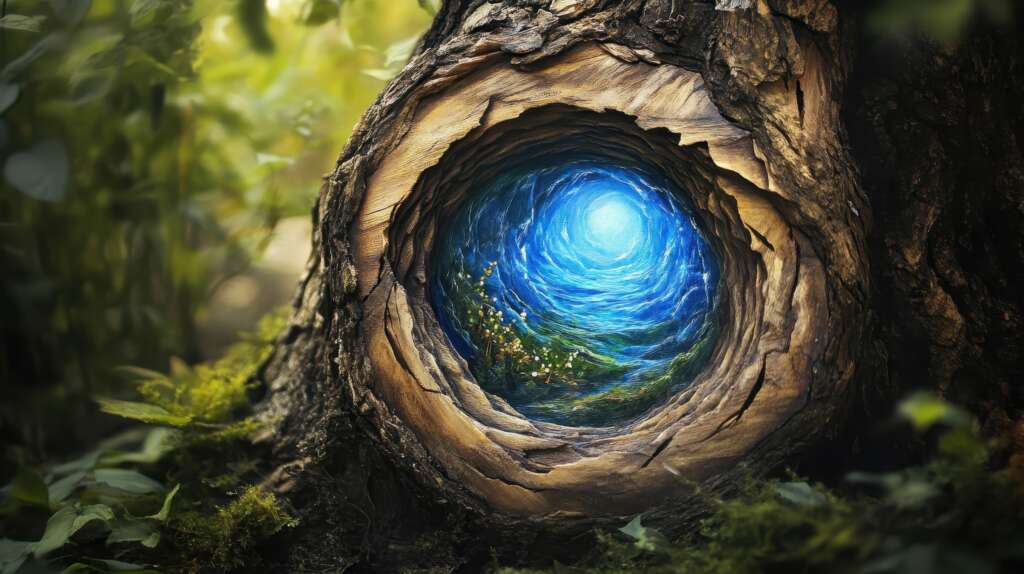
It is sort of like Stonehenge, where once a year on the summer solstice the sun occludes a certain sarsen stone under which there is a treasure. So, I want to write about what may very well be science fiction because there is no evidence that any of this is true or even possible, though there is some mathematical modeling that convince a number of physicists that alternative realities may, in fact, exist but have not yet been discovered. A few theorists like Kaluza and Klein might go so far as to insist that they must exist. And if these other worlds or other dimensions happen, there may likely be a portal someplace to access them, perhaps even in the same forest I explored as a child? That is a very big caveat, however.
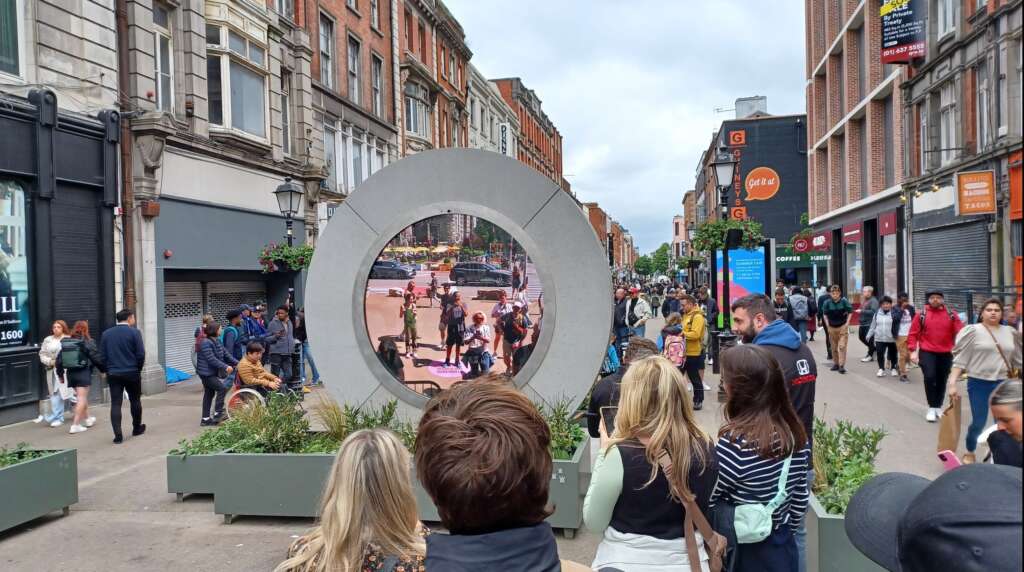
Today, as much as in the past, the notions of portals whereby people can pass from one reality to another remain a popular topic. In the photo above, people in New York City stare at a portal that shows them a street scene in Dublin, Ireland in real time. The people in Dublin, meanwhile, see the pedestrians in Manhattan. This is not magic because no one is teleported anywhere by stepping through the portal. In fact, likely they cannot pass through, because the street scene from Dublin must be projected on something, even if it is a hologram. So, this “portal” is more of a larger version of FaceTime without available audio ability using existing technology. Still, it is novel and draws crowds.
A BRIEF HISTORY OF PORTALS
In the ancient world when Greek civilization was at its peak, the notion of portals took hold. But not every portal back then was worth visiting. In this case, I’m referring to portals that were the gateway between the world of the living and that of the dead in Hades, and almost without exception, they only worked one way. The Greeks recognized seven or so portals that were generally located around inhospitable or unaccessible places, or those that marked the location of superhuman feats by heroes such as Hercules.
In the ancient city of Hierapolis (Ἱεράπολις, for “holy city”) in modern day Türkiye, the Gates of Hell (Plutonium) were located, characterized by a cave that emitted toxic gases. This site was known for its association with the Greco-Roman god of the underworld:
“The site is built on top of a cave which emits toxic gases, hence its use as a ritual passage to the underworld. Ritual animal sacrifices were common at the site. Animals would be thrown into the cave and pulled back out with ropes that had been tied to them. Archaeologists noted that the fumes emitted from the cavern still maintain their deadly properties as they recorded passing birds, attracted by the warm air, suffocated after breathing the toxic fumes.“1
The Trojan hero Aeneas entered Hades from the cave of the Cumaean Sibyl which is located near present day Naples in Italy. He was on a quest to meet his deceased father.
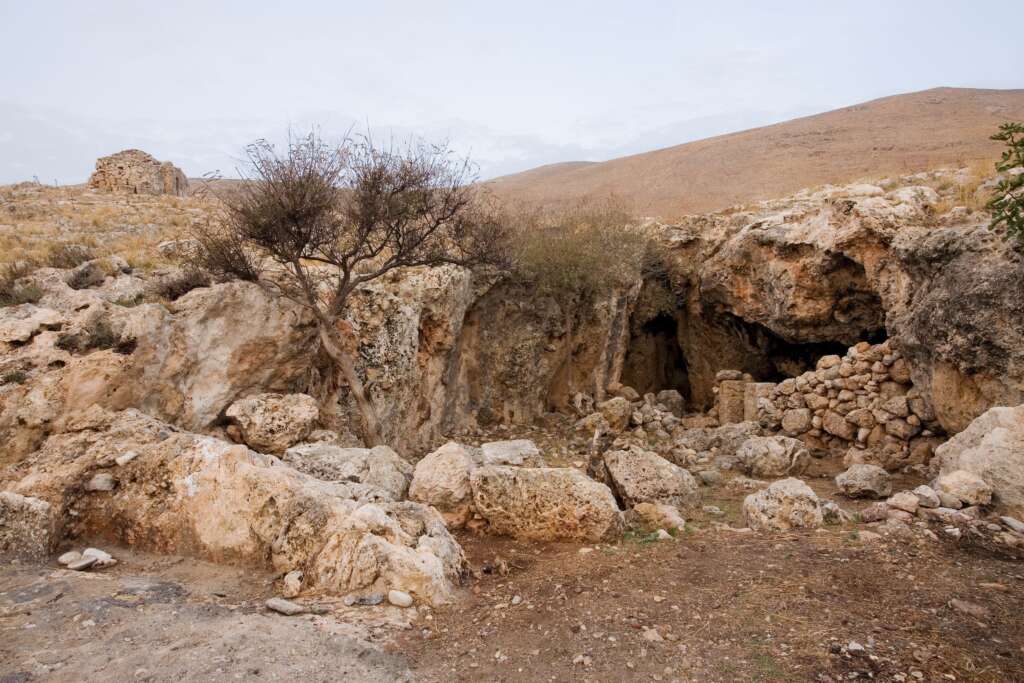
There was another portal in the Cave of Matapan, at the southernmost part of mainland Greece. It was here that the Greek poet and musician Orpheus passed to retrieve his dead wife Eurydice who had left this world after being bitten by a deadly viper. But he failed in his task at the very last moment. A temple to Poseidon (now a church) was located there. This portal is also associated with another famous figure. For his Twelfth Labor, Hercules had to overpower and bring back Ceberus, the three-headed, ferocious dog that guarded the gates of hell (i.e., Hades.) That task took him to the Cave of Matapam (aka Taenarum) as well where he descended to the Styx via a cave.
OTHER EXAMPLES OF PORTALS IN MYTH AND FOLKLORE
Other exam of portals in a broad sense include the Norse notion of Bifröst, known to us (particularly per lovers) as the Rainbow Bridge that connects Midgard (the realm of humans) to Asgard (the realm of the gods.). As with the Greek portals to Hades, one side of the portal is our world while the other side represents another realm (the place of the dead.) Bifröst, however, connects earth with the heavenly, Valhalla kingdom of heroes.
Finally the Celts had a well-developed notion of entry points between mortals and immortal and faeries and such. These portals were often found in lakes or hills.
LEWIS CARROLL AND ALICE
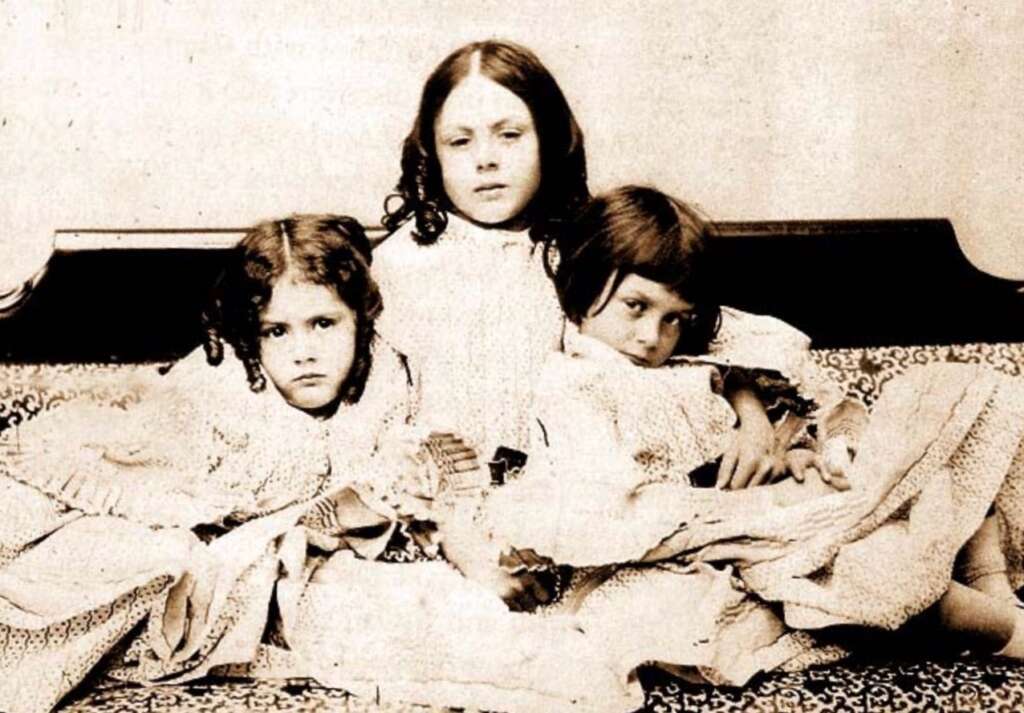
Carroll was not the author’s real name. It was Charles Lutwidge Dodgson and he taught mathematics at Oxford during the mid-nineteenth century. Around that time, he made the acquaintance of Dean Henry Liddell and this thirty-years old scholar appeared to pursue a Lolita-like relationship with Liddell’s ten year old daughter named Alice. Carroll’s hobbies included photography and he took over a thousand photos of young children, a few (including at least one of Alice) in some state of undress. Alice’s Adventures in Wonderland was an impromptu tale Carroll spun to entertain Alice one afternoon, and she encouraged him to write it and have it published as a book, which was a commercial success in Victorian England. Soon after, Carroll fell out of favor with Liddell. The reason is lost to history, but we can easily imagine why. A sequel to the book (Through the Looking Glass) followed several years later.
The contribution Carroll makes to the theme of this post is that there are alternate realities that can be entered through portals. The portals of these realities may be a rabbit hole or a magical mirror. The alternate realities include a society with different laws and customs, characters who dress and behave in ostentatious ways and so on.
C.S. LEWIS AND THE CHRONICLES OF NARNIA

Lewis’s seven book series is set in England during the German Blitz of World War II. Children were evacuated by the thousands from London, Birmingham, Leeds and other cities with the intention of relocating them to the countryside where they would be less likely to be injured in the bombings. While staying in a large English manor, the four Pevensie children (two boys and two girls) discover a passage to a place called Narnia by entering a large wardrobe which had no back to it. If you pushed your way through the heavy coats stuffed with moth balls, presently you found yourself in a forest with talking animals as well as humans. The earthly characters learn things about themselves during their different visits to Narnia over a undisclosed buy significant period of time. A few regular characters disappear and new ones are added.
The premise is that if all of creation were cursed because of the sin in the Garden of Eden, and if there was intelligent life beyond what we have on Earth, then that life would need redemption as well, and then how would God appear to a society of beavers or a herd of unicorns? Or fauns? Or mice? To Lewis, a close friend an companion to JRR Tolkien who was writing about Middle Earth at the time, it made sense that God would appear as an animal, Himself (in this case a Lion.) The seven book cover the history of Narnia from creation until the end of that world, and earthly children are allowed to play a significant part in the process.
Today, we have role playing games and movies (such as Jumanji) that features portals (in the video Jumanji, the game board itself is the portal.). The movie Star Gate has launched three or so entire program series. Consequently, many people are familiar with portals.
A BIT MORE ABOUT PORTALS
While in theory, portals (if they exist) could be any shape, in fiction they are usually portrayed as round. This is possibly because black holes and worm holes are thought to be round. In fact, were a real portal to be discovered, it might be more likely to be round than any other shape. This is because it takes less energy to maintain a spherical shape than any other shape. Raindrops, for example, are spherical (round), so nature seems to prefer things that are round. I’ve even seen a gash in a very ill person “morph” over a period of weeks into a circular lesion.
While a portal to another world or dimension might be smooth like the surface of a mirror, it might have a textured, shimmering or colored appearance, a rotating tunnel with a cloud like appearance, and so on.
There might be strange animals in the vicinity of a portal, or unfamiliar plants and flowers, as different species and seeds are pulled or pushed into our reality from that of another whenever the portal opens. What might actually pass through depends on the portal’s size of course. Like wormholes in space (another hypothetical construct you may have hear about) most wormholes are thought to be very small barely allow something the size of a sesame to enter. Other wormholes might allow a truck to transit. So it would likely be the same with portals.
If the portal disturbs a dimension in some way while opening, a person nearby might feel extremely dizzy, nauseated to the point of vomiting. There would be a very significant distortion as far as proprioception2 and time are concerned. This sensory conflict (between our three-dimensional reality and an additional dimension creates a disturbance in the person’s vestibular system as the distortion from the dimensional perturbation conflicts with what the person’s other senses are telling him (her.) This conflict is what sets the nausea and vomiting into motion as the body seeks to self-correct (perhaps supposing that some sort of poison that may have been ingested.)
Other subjective signs and symptoms including unusual or unfamiliar sights, sounds, smells, temperature changes, time dilation and shifts in gravity which may occur as well, depending on what lies on the other side of the portal. A person standing at the threshold may feel like they are being pushed or pulled towards the portal. Or, they may not feel any direct force at all.
HOW SPACE AFFECTS OUR HEALTH
Activities in space can affect our health. For example, the sun. The sun produces heat which can dehydrate us and solar UV radiation can damage our eyes, cause cancer and age us prematurely. Then, there are coronal mass ejections (CME’s) or giant “flames” or flares sent out from the Sun into space. Prudent living (i.e., the use of sun screen at the beach) can keep these risks in check. However, if the Earth’s ozone layer (which is only one eighth of an inch thick) were damaged, it might not be safe to go outside at all! Pathway MD notes the following risks to specific populations:
Astronauts: They are at a higher risk due to prolonged exposure to solar radiation in space, leading to increased risks of cancer, cardiovascular diseases, and neurological effects.
Airline crew: Frequent flyers and crew members are also at risk due to increased exposure to cosmic radiation at high altitudes, leading to similar health risks as astronauts.
There other obvious threats, such as an asteroid colliding with our planet killing hundreds of millions of people, but as we learn more about the universe, we discover new threats as well as opportunities.
Currently, one area that scientists are studying is gravity, specifically gravitational waves that Einstein predicted in 1916 as well as gravitons (which I won’t go into.) Gravitational waves are “ripples in spacetime generated by accelerating masses, particularly during violent astronomical events like supernovae or the merging of black holes and neutron stars.” Our solar system is hurtling through space at incredible speed as our galaxy carries us through the universe and as our solar system travels through space relative to other stars outside of the Milky Way. Then, there is also the speed at which we rotate around the core of our galaxy. At some point we may pass through a gravitational wave. This wave might shorten or legthen distances from place-to-place on our Earth (but likely imperceivably and temporarily at that.) It could also affect the higher dimensions in ways we cannot even imagine (even if we know for sure they exist.)
What if passing through a gravitational wave could trigger the opening of a portal? Or, the frequency of a reality or dimension as determined by the pattern of vibrations iit has, from cosmic strings (another theory) or particles which (in theory) can resonate with the frequency of another reality. This harmonic might (according to even other theories) cause a breech in a higher dimension allowing a portal to open. Then, again, Type III civilizations on the Kardashev scale might allow intelligent life to manipulate access to other dimensions.
It may be that there is more to our three dimensional plus one existence than we are aware of? See for example my discussion on Plato’s Cave. In that thought experiment, Plato has people chained facing a wall. Behind these men is a bonfire and between the fire and the men people walk back and forth. However, the chained prisoners cannot observe them directly. All they can do in infer that these colorless shapes on the wall before them represent something their eyes cannot directly behold. If you asked these prisoners to describe what appears on the wall, their conclusions would be much more different that yours or mine.
I’ve come as far as I can go on the subject of portals. What I’d like to do is go to the next topic on parallel worlds. Stay tuned.
FOOTNOTES
1Lorenzi, Rossella (29 March 2013). “Pluto’s Gate Uncovered in Turkey” (Discovery News.)
2“Proprioception is the body’s ability to sense its position and movement in space, essential for coordination and balance. It involves receptors in muscles, tendons, and joints that send information to the brain, allowing for precise control of movements without the need for visual input.” Pathway MD.

